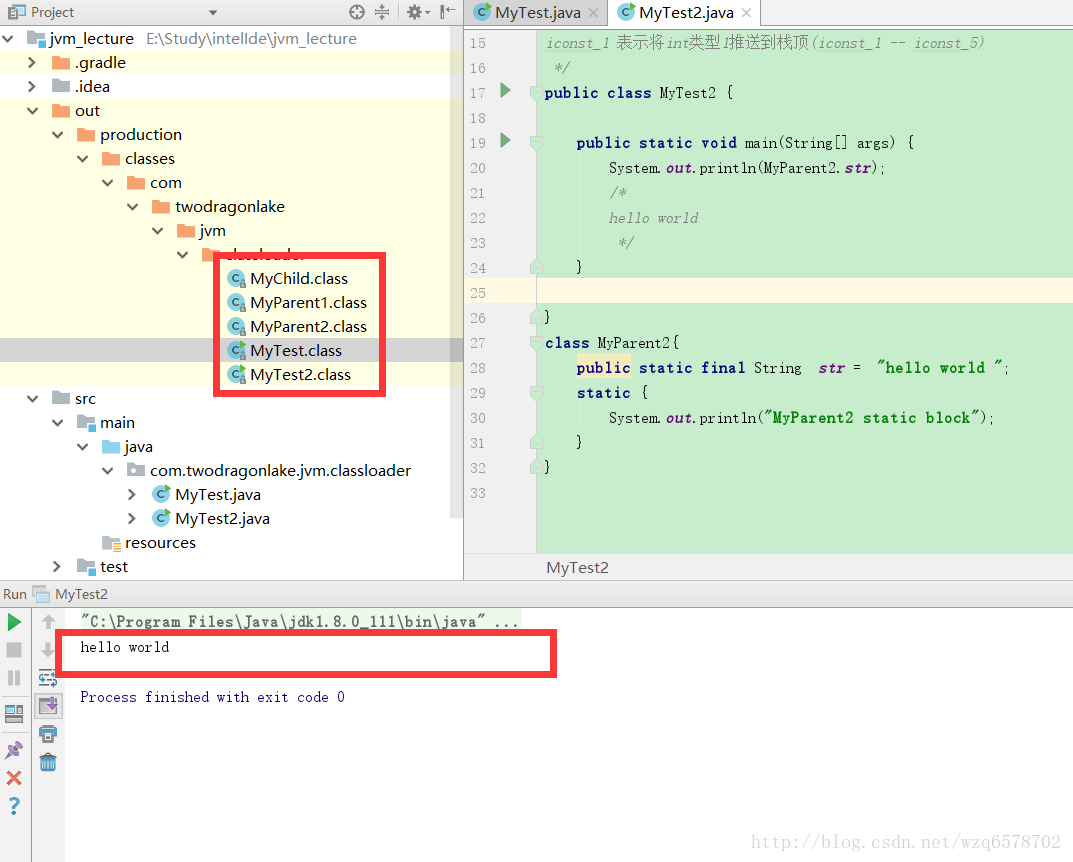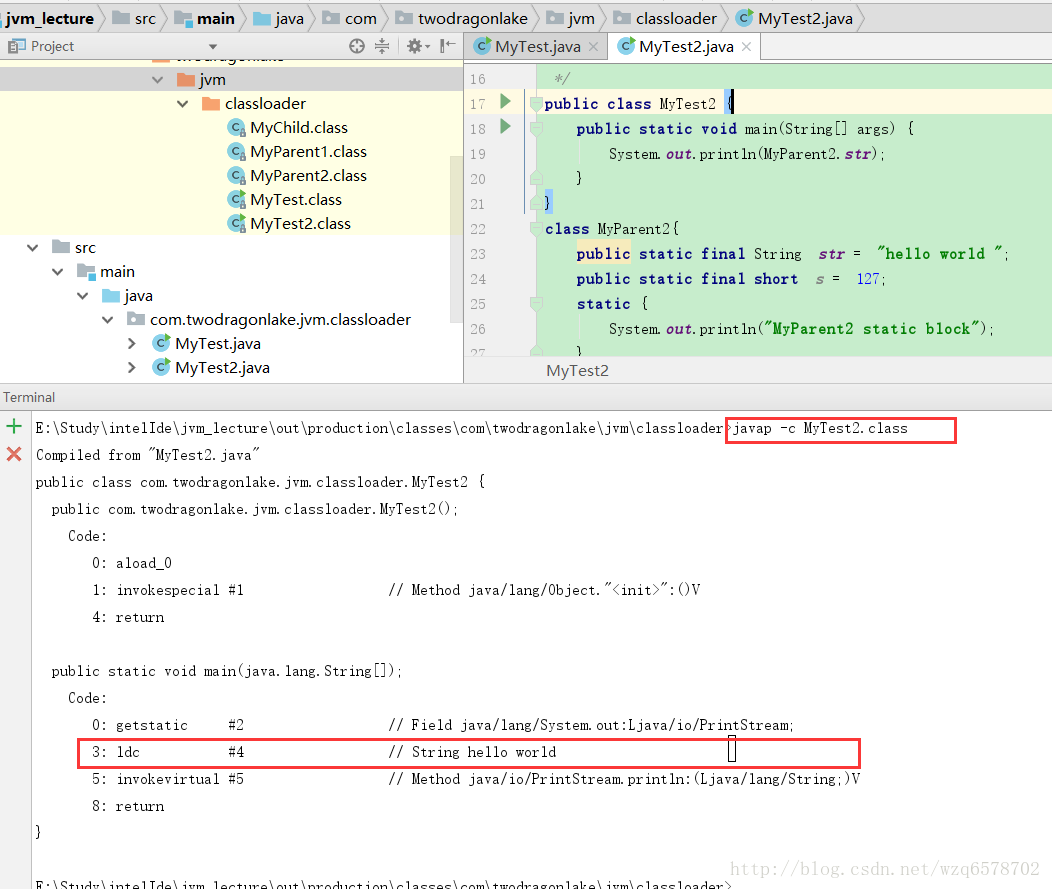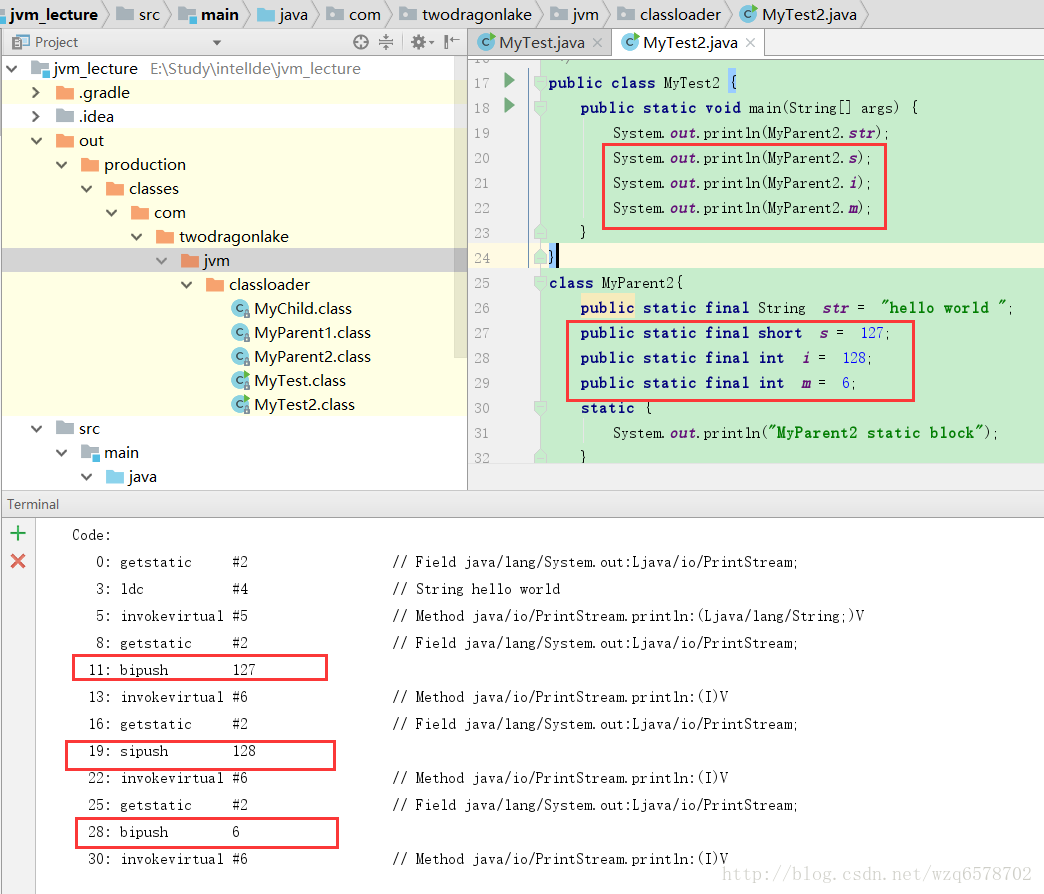jvm原理(2)常量的本质含义与反编译及助记符详解
先运行一段程序:
1 | public class MyTest2 { |
输出的结果就是 : hello world
注意我们在str变量的修饰上加了final修饰符,如果我们不加final修饰符,那么打印的结果会是:
1 | MyParent2 static block |
加了final关键字之后str就会变成常量:
常量在编译阶段会存入到调用这个常量方法所在的类的常量池中
本质上,调用类并没有直接引用到定义常量的类,因此并不会触发定义常量的类的初始化
注意:我们指的是将常量存放到了Mytest2的常量池中,之后Mytest2与MyParent2就没有任何关系了
甚至:我们可以将MyParent的class文件删除
我们可以试验一下:
程序照样输出 ,而且不会报错,这就验证了上边的介绍。
我们反编译一下Mytest2:
出现一个助记符ldc
助记符:
ldc:表示将int、float、或是String类型的常量从常量池中推送至栈顶。
其实还有其他的助记符:
bipush:表示将单字节(-128 ~ 127 )的常量推送到栈顶
sipush : 表示将一个短整型常量值(-32768 ~ 32767)推送到栈顶
iconst_1 表示将int类型1推送到栈顶(iconst_m1 – iconst_5)
这些助记符其实可以在jdk的com.sun.org.apache.bcel.internal.generic里边可以看到对用的类,是从apache基金会吸收过来的。